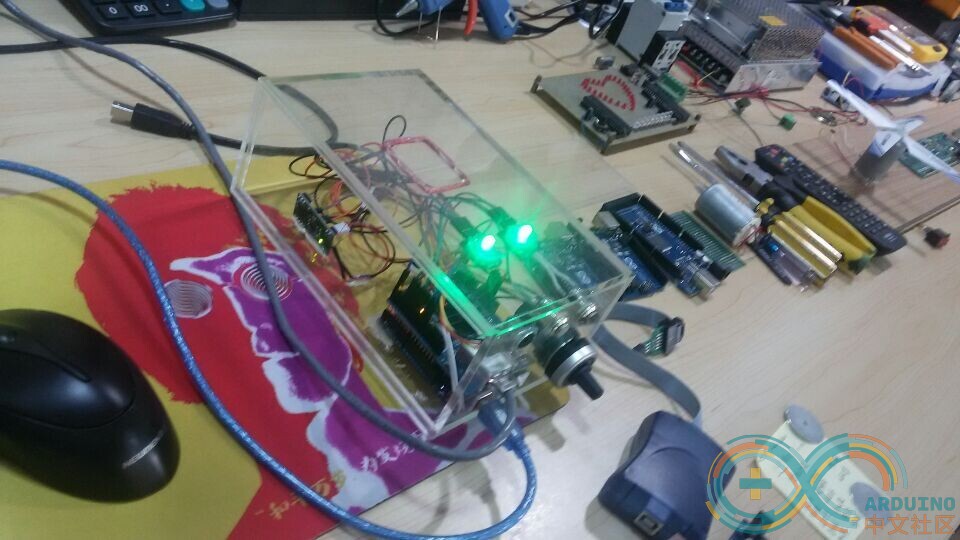
Wi-Fi enabled Orb gathering the Dow Jones Industrial Average (DJIA) from Google finance data. This project has been developed by Tom Cantrell and he used a Parallax as a MCU and WizFi210 for network processing. All network stuff is bone by simple AT command via UART.
Project details here.
By Tom Cantrell
Contributed By Convergence Promotions LLC
10/10/2012
Do your own thing
So what does Wi-Fi do for an encore? Well, how about an ‘Internet of Things’ (aka ‘IoT’) that connects virtually every gadget with an electron moving to the Internet? As shown in Figure 1, first generation ‘IoT’ devices are already hitting the market, and that is just the start. It is impossible to imagine all the applications that will evolve once everything is connected to the ‘cloud,’ but no doubt some of them will be killer indeed.

Seeing the future
I was over at a friend’s office and noticed he had a spherical lamp, kind of like a crystal ball, emitting a soft red glow on his desk. He said it was a stock market ‘Orb,’ and sure enough as our meeting progressed, the lamp cycled to green as the Dow Jones Industrial Average (DJIA) turned positive.
His ‘Orb’ was from a company called Ambient Devices. Their Ambient Stock Orb (see Figure 2) relies on a proprietary data-casting service over a cellphone network. While some data is free (e.g., the DJIA), other data monitoring options require a paid subscription.

Figure 2: Ambient Stock Orb (Courtesy Ambient Devices).
Let’s build our own ‘Wi-Fi Orb’, one that lets you monitor anything you can find on the web, free of charge. Thanks to the march of silicon, all it takes is an MCU, Wi-Fi interface and a bit of software. Figure 3 shows Parallax, Inc.’s Propeller™ Board of Education® (BoE) on the left and the WIZnet WizFi210 EVB on the right. The large boards make prototyping easy but overstate the silicon and real estate required. A real ‘Wi-Fi Orb’ would need only the Propeller brain (MCU, serial EEPROM and crystal near just below the red LED) and the postage stamp-size WizFi210.

Figure 3: Propeller Board of Education (BoE) on the left and the WIZnet WizFi210 EVB on the right.
Parallax’s Propeller is a unique multicore flash MCU that is especially useful for quick development. A fast turnaround IDE means edit-compile-download cycles take just seconds. There is also a full library of pre-defined software ‘objects’, and more in the Parallax online ‘Object Exchange.’ Objects really help leverage and focus your coding power on what is unique about your application, instead of the boilerplate.
The Wi-Fi part of the equation is handled by a WIZnet WizFi210 embedded Wi-Fi module. It has a standard serial interface that makes for a simple connection to the Propeller. But it’s the module’s built-in intelligence that really makes things easy. Getting online is just a matter of issuing a few high-level commands.
Like any other Wi-Fi device, the first step is provisioning the WizFi210 so that it can access your wireless network. That means setting it up with your WLAN name (i.e., SSID), security regime (WEP, WPA-PSK, and passwords), gateway and DNS server addresses, etc. The WizFi210 has a built-in webpage for wireless provisioning, or it can be done by entering commands via the serial port. Once provisioned, the settings profile is saved to flash inside the WizFi210 module and used for subsequent power-ups.

COMMENTS